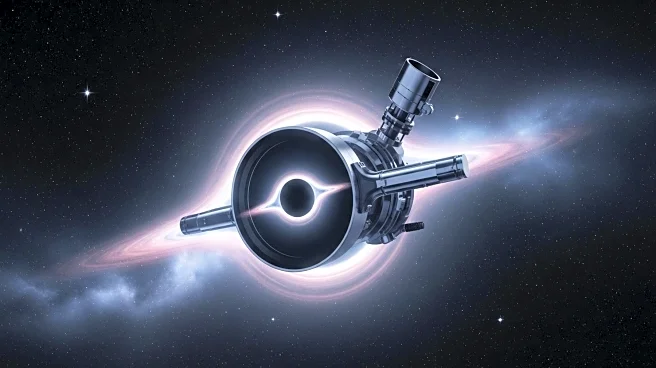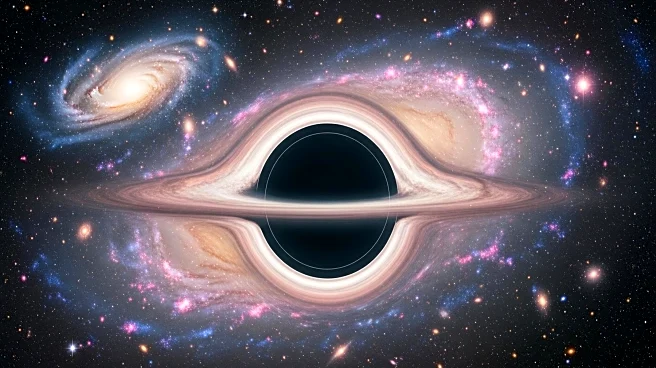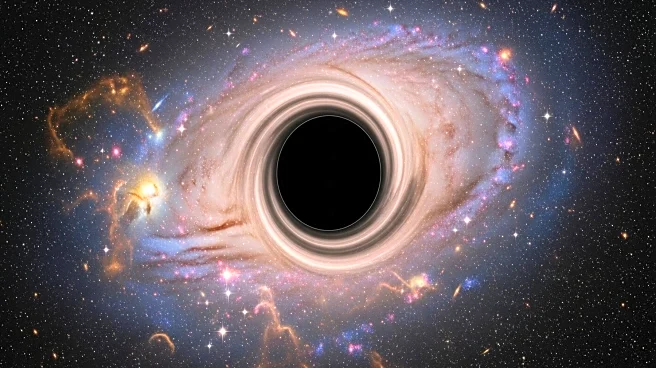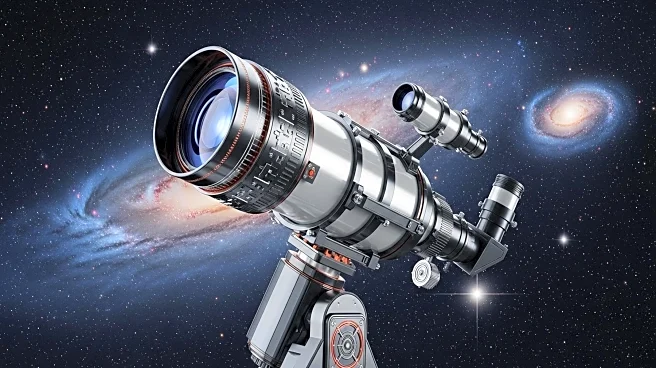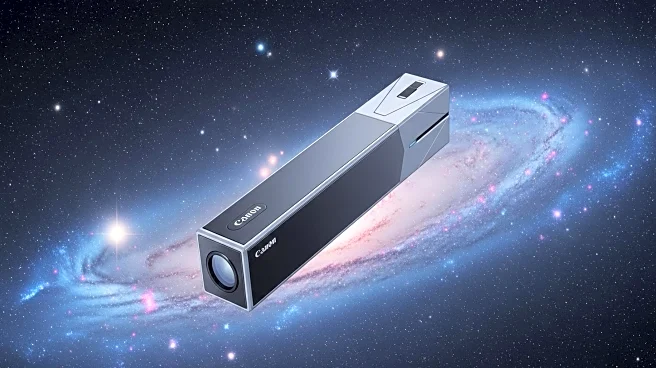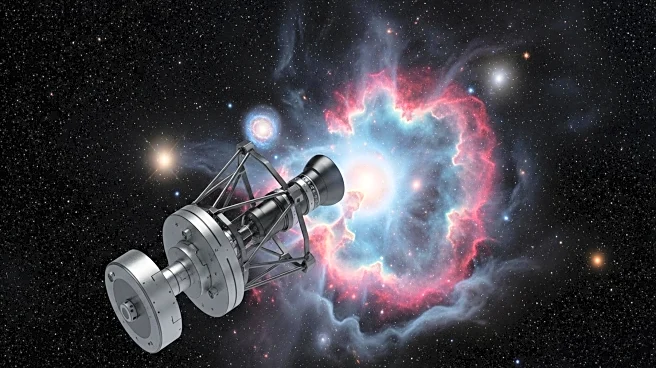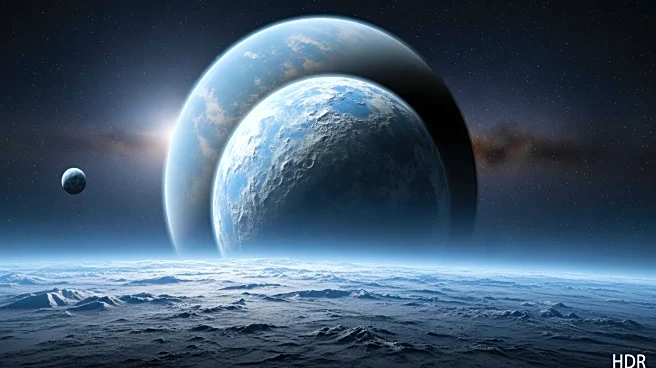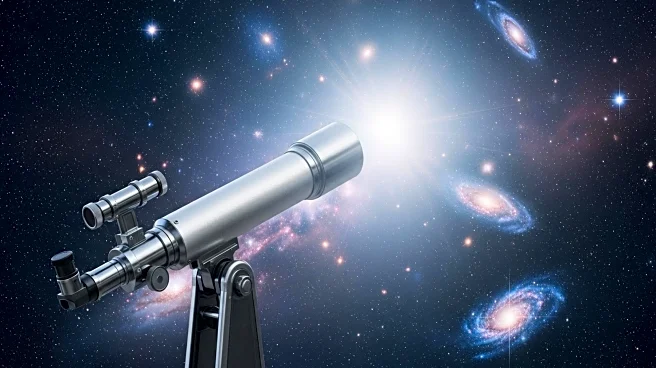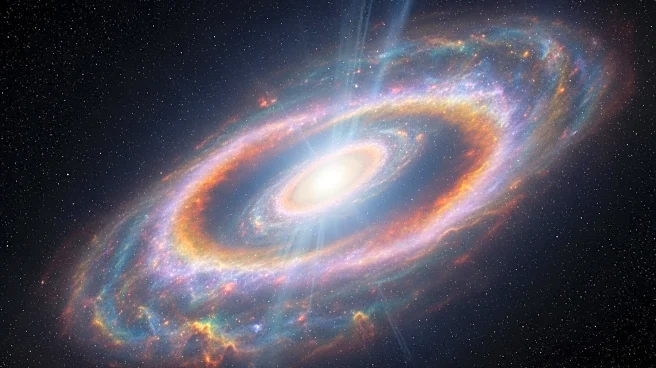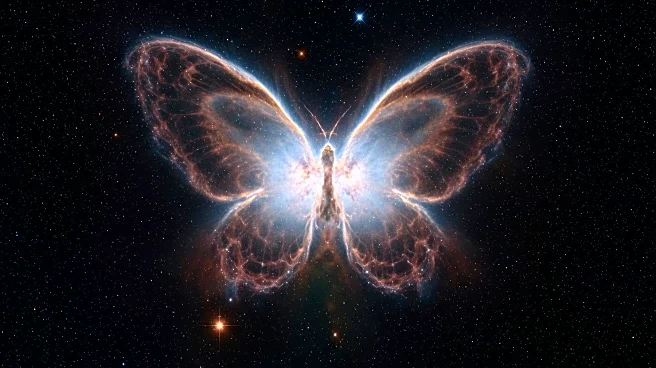What's Happening?
The James Webb Space Telescope has identified a black hole that may have formed in the first fraction of a second after the big bang, potentially confirming the existence of primordial black holes. This discovery challenges the prevailing theory that stars and galaxies formed first, with black holes emerging later from collapsing stars. The black hole, referred to as QSO1, is characterized by a sparse halo of surrounding material, suggesting it formed without a preceding galaxy. The observations indicate that the black hole has a mass of 50 million solar masses, with surrounding material less than half of this mass. The findings, posted on the preprint Arxiv website, suggest the black hole's formation occurred in a chemically pristine environment, primarily composed of hydrogen and helium.
Why It's Important?
The potential confirmation of primordial black holes could significantly alter our understanding of the universe's formation and the fundamental laws of physics. If these black holes existed from the beginning, they may have played a crucial role in the formation of galaxies by acting as gravitational pockets. This discovery could lead to a reevaluation of existing cosmological models and theories. The implications extend to the field of physics, where a confirmed primordial origin for black holes would necessitate a reconsideration of the laws governing cosmic evolution. The findings also highlight the capabilities of the James Webb Space Telescope in advancing astronomical research.
What's Next?
Further research and observations are required to confirm the primordial nature of the detected black hole. The debate over the origins of these black holes is expected to continue, with future advancements in gravitational wave detectors potentially providing definitive evidence. These detectors, anticipated to be operational within the next decade, will be crucial in identifying black holes across the universe and settling the matter. The scientific community will likely engage in extensive discussions and analyses to explore the implications of this discovery and its impact on existing theories.
Beyond the Headlines
The discovery raises questions about the environmental conditions necessary for the direct collapse of gas and dust into black holes, as opposed to star formation. This scenario, while considered less likely, could offer alternative insights into cosmic evolution. The findings also underscore the importance of technological advancements in space exploration, as the James Webb Space Telescope continues to provide unprecedented insights into the universe's early history.
